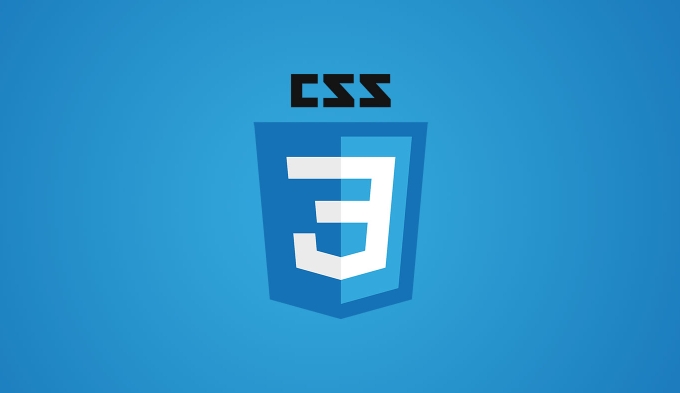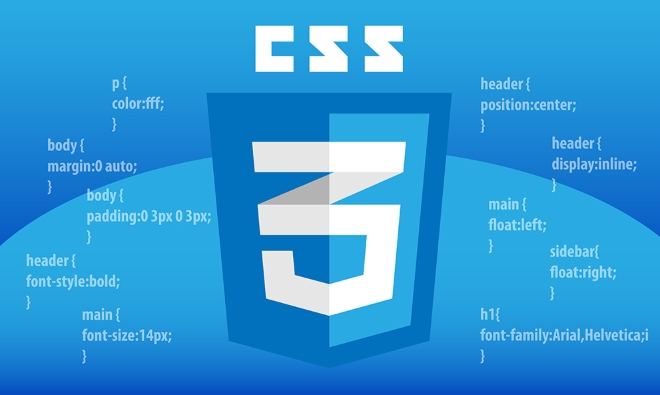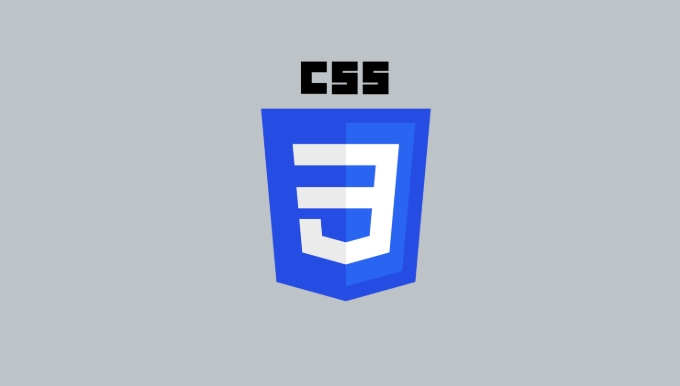In CSS, "cascade" refers to the browser's algorithm to resolve style conflicts. It determines which rule takes effect through selector specificity, source order and style source. For example, when two rules conflict, selectors with higher specificity take precedence; if the specificity is the same, the subsequent rules win; in addition, the priority of user agent, user and author styles also work. !important can be forced to cover, but should be used with caution. Managing the CSS structure, naming specifications and debugging tools can effectively improve the control of cascade.

When you're working with CSS, "cascade" is one of those terms that come up often — and for good reason. It's what determines which styles actually get applied to your HTML elements when there are conflicting rules.

So, what is the cascade in CSS? Simply put, it's the algorithm browsers use to decide which CSS rule wins when multiple rules could apply to the same element. It's not just about which selector matches — it's also about specification, source order, and where the styles come from.
Here's how it really works.

How Browsers Choose Between Conflicting Styles
Imagine you have two CSS rules that both target the same <p></p> element:
p {
color: blue;
}
.special {
color: red;
}And your HTML looks like this:

<p class="special">Hello</p>
Which color do you think wins?
The answer is red — because .special has higher specificity than a plain element selector. That's the cascade in action.
But it's not always that straightforward. The browser considers several factors:
- Selector specification
- Source order (which rule appears last)
- Origin of the style (user agent, user styles, author styles)
These layers help the browser sort out conflicts without guessing.
Understanding Specificity in the Cascade
Specificity is basically a scoring system that the browser uses to determine which rule is more specific — and therefore more important.
Here's a basic breakdown of how different selectors rank:
- Inline styles (like
style="max-width:90%") have the highest score. - ID selectors (
#header) come next. - Class selectors , attribute selectors, and pseudo-classes (
.btn,[type="text"],:hover) are lower. - Element selectors and pseudo-elements (
p,::before) are the lowest.
If two rules have the same specification, then the one that appears last in the stylesheet wins. This is called source order.
Also, if you're using something like !important , that throws a wrench into the normal flow — but we'll get to that in a bit.
Where Does !important Fit In?
Using !important is like shouting in a library — it gets attention, but it can make things messy.
When you add !important to a declaration:
p {
color: blue !important;
} It overrides other declarations regardless of specificity or source order , unless another !important rule with equal or higher specification comes later.
This can be useful in some cases — like overriding third-party styles — but overusing it leads to hard-to-maintain code. It skips the usual cascade logic, making debugging trickier.
Use it sparingly, and only when absolutely necessary.
Practical Tips for Managing the Cascade
Here are a few real-world strategies to avoid getting tripped up by the cascade:
- Keep your CSS organized — group related styles together and avoid scattered overrides.
- Use consistency naming conventions (like BEM) to manage specificity without going overboard.
- Avoid
!importantunless you're dealing with external libraries or inline styles. - Use browser dev tools to inspect which styles are being applied — they show you exactly what's winning and why.
You'll start noticing patterns once you get used to how the cascade behaves. And that makes styling a lot smoother.
Cascade might sound complex at first, but it's really just a system for resolving style conflicts. Once you understand specificity, source order, and the role of !important , it becomes much easier to predict and control how your styles behave.
Basically that's it.
The above is the detailed content of What is the cascade in CSS?. For more information, please follow other related articles on the PHP Chinese website!

Hot AI Tools

Undress AI Tool
Undress images for free

Undresser.AI Undress
AI-powered app for creating realistic nude photos

AI Clothes Remover
Online AI tool for removing clothes from photos.

Clothoff.io
AI clothes remover

Video Face Swap
Swap faces in any video effortlessly with our completely free AI face swap tool!

Hot Article

Hot Tools

Notepad++7.3.1
Easy-to-use and free code editor

SublimeText3 Chinese version
Chinese version, very easy to use

Zend Studio 13.0.1
Powerful PHP integrated development environment

Dreamweaver CS6
Visual web development tools

SublimeText3 Mac version
God-level code editing software (SublimeText3)
 How to use PHP to build social sharing functions PHP sharing interface integration practice
Jul 25, 2025 pm 08:51 PM
How to use PHP to build social sharing functions PHP sharing interface integration practice
Jul 25, 2025 pm 08:51 PM
The core method of building social sharing functions in PHP is to dynamically generate sharing links that meet the requirements of each platform. 1. First get the current page or specified URL and article information; 2. Use urlencode to encode the parameters; 3. Splice and generate sharing links according to the protocols of each platform; 4. Display links on the front end for users to click and share; 5. Dynamically generate OG tags on the page to optimize sharing content display; 6. Be sure to escape user input to prevent XSS attacks. This method does not require complex authentication, has low maintenance costs, and is suitable for most content sharing needs.
 PHP creates a blog comment system to monetize PHP comment review and anti-brush strategy
Jul 25, 2025 pm 08:27 PM
PHP creates a blog comment system to monetize PHP comment review and anti-brush strategy
Jul 25, 2025 pm 08:27 PM
1. Maximizing the commercial value of the comment system requires combining native advertising precise delivery, user paid value-added services (such as uploading pictures, top-up comments), influence incentive mechanism based on comment quality, and compliance anonymous data insight monetization; 2. The audit strategy should adopt a combination of pre-audit dynamic keyword filtering and user reporting mechanisms, supplemented by comment quality rating to achieve content hierarchical exposure; 3. Anti-brushing requires the construction of multi-layer defense: reCAPTCHAv3 sensorless verification, Honeypot honeypot field recognition robot, IP and timestamp frequency limit prevents watering, and content pattern recognition marks suspicious comments, and continuously iterate to deal with attacks.
 What are common CSS browser inconsistencies?
Jul 26, 2025 am 07:04 AM
What are common CSS browser inconsistencies?
Jul 26, 2025 am 07:04 AM
Different browsers have differences in CSS parsing, resulting in inconsistent display effects, mainly including the default style difference, box model calculation method, Flexbox and Grid layout support level, and inconsistent behavior of certain CSS attributes. 1. The default style processing is inconsistent. The solution is to use CSSReset or Normalize.css to unify the initial style; 2. The box model calculation method of the old version of IE is different. It is recommended to use box-sizing:border-box in a unified manner; 3. Flexbox and Grid perform differently in edge cases or in old versions. More tests and use Autoprefixer; 4. Some CSS attribute behaviors are inconsistent. CanIuse must be consulted and downgraded.
 How to build a PHP Nginx environment with MacOS to configure the combination of Nginx and PHP services
Jul 25, 2025 pm 08:24 PM
How to build a PHP Nginx environment with MacOS to configure the combination of Nginx and PHP services
Jul 25, 2025 pm 08:24 PM
The core role of Homebrew in the construction of Mac environment is to simplify software installation and management. 1. Homebrew automatically handles dependencies and encapsulates complex compilation and installation processes into simple commands; 2. Provides a unified software package ecosystem to ensure the standardization of software installation location and configuration; 3. Integrates service management functions, and can easily start and stop services through brewservices; 4. Convenient software upgrade and maintenance, and improves system security and functionality.
 Describe the `vertical-align` property and its typical use cases
Jul 26, 2025 am 07:35 AM
Describe the `vertical-align` property and its typical use cases
Jul 26, 2025 am 07:35 AM
Thevertical-alignpropertyinCSSalignsinlineortable-cellelementsvertically.1.Itadjustselementslikeimagesorforminputswithintextlinesusingvalueslikebaseline,middle,super,andsub.2.Intablecells,itcontrolscontentalignmentwithtop,middle,orbottomvalues,oftenu
 What is the accent-color property?
Jul 26, 2025 am 09:25 AM
What is the accent-color property?
Jul 26, 2025 am 09:25 AM
accent-color is an attribute used in CSS to customize the highlight colors of form elements such as checkboxes, radio buttons and sliders; 1. It directly changes the default color of the selected state of the form control, such as changing the blue check mark of the checkbox to red; 2. Supported elements include input boxes of type="checkbox", type="radio" and type="range"; 3. Using accent-color can avoid complex custom styles and extra DOM structures, and maintain native accessibility; 4. It is generally supported by modern browsers, and old browsers need to be downgraded; 5. Set accent-col
 How to compile SCSS to CSS?
Jul 27, 2025 am 01:58 AM
How to compile SCSS to CSS?
Jul 27, 2025 am 01:58 AM
InstallDartSassvianpmafterinstallingNode.jsusingnpminstall-gsass.2.CompileSCSStoCSSusingthecommandsassinput.scssoutput.css.3.Usesass--watchinput.scssoutput.csstoauto-compileonsave.4.Watchentirefolderswithsass--watchscss:css.5.Usepartialswith_prefixfo
 How to change text color in CSS?
Jul 27, 2025 am 04:25 AM
How to change text color in CSS?
Jul 27, 2025 am 04:25 AM
To change the text color in CSS, you need to use the color attribute; 1. Use the color attribute to set the text foreground color, supporting color names (such as red), hexadecimal codes (such as #ff0000), RGB values (such as rgb(255,0,0)), HSL values (such as hsl(0,100%,50%)), and RGBA or HSLA with transparency (such as rgba(255,0,0,0.5)); 2. You can apply colors to any element containing text, such as h1 to h6 titles, paragraph p, link a (note the color settings of different states of a:link, a:visited, a:hover, a:active), buttons, div, span, etc.; 3. Most






